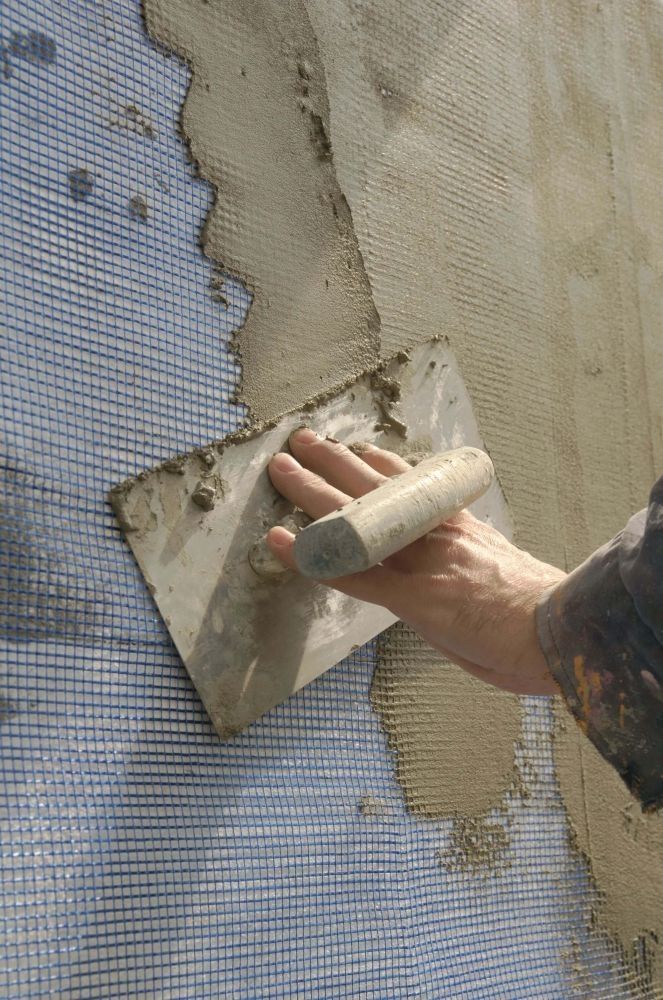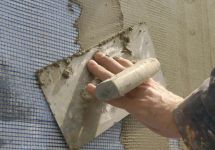The most frequent errors made when insulating a home (part three)
Good polystyrene and other materials cannot are not enough to provide a well-done insulation of the house. This time we want to take a closer look at neglected details.
No starting track
A starting track is a kind of base for the first sheet/board. The track is not only important as the basis for insulation. It is the best protection from rodents and insects . It closes from the bottom all gaps between the insulation and the wall.
The track must be ideally levelled, otherwise the error will be increasing as we move up with the next sheets. Consequently, to “get rid of it” a builder wil have to separate next sheets.
Uneven insualtion surface
All uneven surfaces must be eliminated in order to prevent them from protruding on the layer with a reinforced mesh, and eventually on the plaster. They are usually areas where gaps were filled - excessive material (foam) must be removed and the joint abraded. Unevenness in joints may be a result of uneven substarte - it’s a kind of revange when we do not put enough effort to do it properly. These areas must be abraded, although it is not the most favourite work of contractors, mainly due to flying polystyrene particles.
The third reason for unevenness are anchors. Neither can they protrude nor be too deep. If this is the case, hollows need to be filled with adhesive and cured before applying the adhesive onto the whole surface of the wall (as a reinforcing layer). Applying a thicker layer in one area may contribute to hollows or even cracks, after the adhesive has cured. Moreover, even tiny irregularities can be seen on the facade at the glancing light.
Leaving polystyrene without protection for a longer period
As a result of UV radiation polystyrene is decomposed - turn yellow and becomes very fragile. It seems to be not dangerous as the problem refers to a very thin top layer of 1 or 2 mm thickness. This weak and peeling layer like a skin, does not deteriorate the thermal insulating properties of the sheets (boards), but it is supposed to provide adhesion to the layer with a reinforced mesh, being the foundation for plaster! If it peels, it’s easy to come to the conclusion that adhesion will be very weak. If we see somewhere such a damaged surface of polystyrene, it’s necessary to abrade it and remove its weak “skin” this way.
Graphite polystyrene and strong sunlight
The issue of the sun's effect on insulation has another aspect - the effect on more and more popular gray graphite polystyrene. This polystyrene, due to its dark colour can overheat due to intense and strong sunlight. Actually, only its top layer is subject to overheating. Polystyrene is a good insulator and heat finds it difficult to penetrate it deeper. This leads to high internal stresses in the sheets which begin to deform. Gaps between them are formed and freshly installed sheets might even come off the wall. Therefore, the insulated facade should be protected from strong direct sunlight by hanging a mesh on the scaffolding.
Faulty reinforcing layer
An adhesive applied on the fibreglass reinforcing mesh is an underrated layer. First of all we have to correct some misconception about it. It’s not an adhesive on the fibreglass mesh but a layer of adhesive reinforced with a mesh. The diffrence is enormous. An adhesive which comes into contact with polystyrene and bonds it. The contact area must be as large as possible. Then, a fibreglass mesh reinforces the adhesive layer, it is reinforcement that absorbs tensile strenght. Consequently, after performing a correct application, we obtain an adhesive layer which is bonded strongly with polystyrene substrate (or mineral wool), whose strenght is enhanced by embeded mesh. What happens if the adhesive layer on polystyrene is too thin (or there is no layer at all), and we apply an adhesive on the mesh? Adhesion of the adhesive layer will be a lot weaker, as the mesh between the substrate and the adhesive will weaken it. Instead of a strong contact on the entire surface we will obtain it only in certain areas, where the adhesive was able to go through the mesh.

